Leo Fender: The History and Legacy of the Man Behind the Guitars
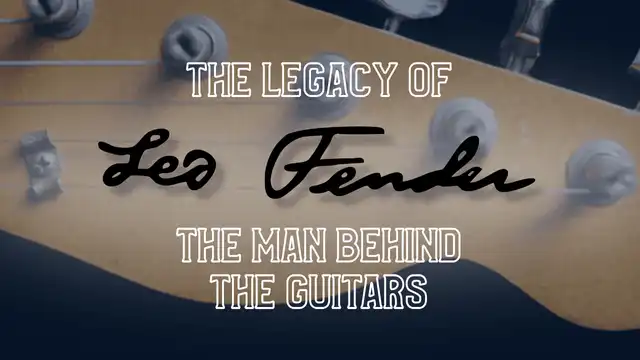

A name synonymous with six-strings, Clarence Leonidas “Leo” Fender was doubtless one of the most influential people in the world of modern music - despite scarcely playing a note.
Leo Fender’s history and legacy, profound as they may be, have the plainest of origins—for one, he was literally born in a barn. Despite this, he inarguably revolutionized music as we know it, holding almost as many ingenious patents as years he was alive. Leo’s story is inspiration of the highest caliber—a true testimony to the power of passion and perseverance.
Learning about the life of Leo Fender will inspire you to look at his instruments in a whole new light. Each guitar and amp was a product of his love, genius, and non-stop drive to perfect the imperfect-ible.

The Early Days
One might guess —drawing from his clear intuition for the guitar craftsmanship— that Leo Fender came from a long line of luthiers in a similar vein as Gibson and Martin. But, not only were neither of his parents in the music business, Leo Fender himself was never a guitarist.
Fender was born in Orange County, CA in 1909 when the main industry was, literally, oranges. His parents, a couple of orange farmers named Clarence and Harriet, did give the young Leo musical opportunities in the form of sax and piano, but those hobbies never took.
What did hook Leo’s childhood attention was the emerging world of electronics, to which he was introduced by his uncle, John West. West showed the kid Fender a radio he had made from discarded parts and pieces, which by most accounts is what inspired Leo’s passion for electrical engineering. Within a few years, Leo began repairing radios at home, quickly becoming adept with the new technology.
Radio broadcasting was in its earliest experimental stages when Leo was born. The first commercial radio broadcasts happened in 1920, just two years before he was awed by his uncle’s homemade device. Radios, amplifiers, pickups—electronic gizmos in general—were all in their infancy. To be on the leading edge of this technology then would be like developing VR and AI today.
And Leo? He was a self-taught pioneer, a mastermind tinkering in his workshop in his spare time—yet an altogether humble, hardworking fellow whose interest in electronics would radically alter musical history.

Enduring the Depression
Following high school, Leo went on to study accounting for 2 years at the local Fullerton Junior College, graduating right as the Great Depression really started to grip the world’s economy.
Like many post-recession grads throughout history, Leo was at first only able to find work totally unrelated to his degree and wound up driving a delivery truck. This was followed by a few different accounting jobs, all of which he was eventually laid off from.
However, Leo did have a few bright spots during the early 30s. For one, he met and married Esther Klosky. Also, Fender had never left electronics alone, continuing to run repairs in his home shop. He'd also started to design and build his own PA systems to rent out to dance halls.
After (mercifully) losing his last accounting job, Leo and Esther moved back to his hometown of Fullerton, where—perhaps motivated by his wife’s support and his recent commission to build 6 PA systems for a Hollywood bandleader—he opened his first business, Fender Radio Service.
The First Fender Companies
Leo dove headfirst into his first electronics company, offering repairs on all sorts of audio equipment, as well as building PAs for sale and rent and electrifying acoustic guitars with new-to-the-scene pickups. He gradually expanded his services offered and his shop’s square-footage, ultimately growing into a kind of one-stop music shop dispensing records, gear, and instruments to musicians of the burgeoning Orange/LA music scene.
His sales of the electric lap steel led Leo to meet Doc Kauffman, Rickenbacker’s chief designer of electric guitars, in the early 1940s. The two teamed up to form K & F Manufacturing Corp, releasing Fender’s first guitar and amp designs under the K & F brand.
This partnership only lasted a few years, after which Leo renamed the company first as Fender Manufacturing before eventually settling on Fender Electric Instrument Co. in 1947.

Dawn of a New Age
The newly established Fender Electric Instrument Co. dabbled in lap steels and amplifiers, producing between ‘46 and 48’ the original Fender amp lineup: the Princeton, the Deluxe, and the Professional, a.k.a., "the Woodies." The Professional was particularly noted as an amp of the highest quality, pumping out 25-watts of tube power compared to the typical 15-watt max of the time.
Despite these innovations, FEIC's success was modest at best. But something great was on the horizon, something Leo had been piecing together in his head since guitarists first began visiting his shop.
Leo had been tuned in to music, quite literally, since he first started his teenage radio repairs. Once he began designing amps and guitars, he paid close attention to the feedback from the local scene. Music was changing—big bands were fading while smaller, guitar-focused groups were on the rise. Yet the electric guitars of the time, both the lap steels and the popular Gibson archtops, left something to be desired. Cumbersome, prone to squealing, clunky U-shaped necks—lead guitarists listed their woes to Fender, and Leo listened.
Partnering with Dale Hyatt and George Fullerton in the late 40s, Leo Fender began carving out his designs for a Spanish-style electric guitar tailored to meet the needs of his customers. After a rough prototype or two, Fender Musical Instrument Co. released its first revolutionary model in 1950, the Fender Esquire.
The Fender Floodgates Open
As can be expected from any new invention, the Esquire had quite a few issues, the most notable being its quick-to-warp neck. The lack of a truss rod meant no adjustments were possible, and any weather-bent neck had to be completely replaced. Less than 50 of these models were made before they were discontinued by the end of the 1950.
Heading back to the workshop, Leo Fender and his associates made some adjustments to the Esquire’s design, adding an additional pickup and a much-needed truss rod. This Esquire "mark II" was released as the Fender Broadcaster in 1951.
This name, however, would not stick around long, for Gretsch had previously lain claim to it for their “Broadkaster” drum line. The solution? Simply snip “Broadcaster” off the decals! The result was the model-less Fender “Nocasters” of ‘51.
Fender’s guitars went without a name until late 1951 when they were re-released as the legendary Telecaster. Bolstered by the marketing expertise of Don Randall and Dale Hyatt, the Telecaster soon became a hit among country and rockabilly guitarists.
Soon to follow was the extraordinary Fender Precision Bass. The first of its kind, the now-legendary P-Bass eased the burden of bassists worldwide by providing fat, lush low-end in a compact, easy-to-play solid-body electric. Notably, it was fretted, unlike the standup basses up to that time, hence it’s “Precision” title.
1953 saw the introduction of Freddie Tavares to the Fender team and consequently the design and release of the Stratocaster. Sporting three switchable pickups and a modern tremolo arm, the Strat was yet another hit offering guitarists novel dimensions of tone and playability.
Leo Fender’s aim was not only to make a reliable, durable, great-sounding electric guitar that was fun to play—he wanted to do it fast. He sought to streamline the guitar manufacture process, utilizing simple designs, easy-to-replace parts, and in-house machining to churn out thousands of high-grade guitars. His innovations in luthiery that allowed for high-speed production—such as the use of bolt-on one-piece necks—earned him the nickname “The Henry Ford of Guitars”.

The Future is Fender
Musicians everywhere began taking note of these revolutionary new instruments—their sleek designs, vibrant hot-rod colors, and bright, articulate tones were something to behold. It wasn’t long before competitors caught on to the rising newcomer. Fender had put Gibson on the alert, prompting the release of the Les Paul and setting the stage for a new wave of music and musicianship.
Fender amp production remained in full swing throughout the 50s. The Tweed series was on the rise, with ‘55 debuting Fender’s first built-in effects model, the Tremolux. Renowned amps and their predecessors such as the Twin and the Champ were introduced during this time. Pedals such as the Fender Volume, Volume Tone, and Eccofonic started hitting the market around this time.
By the mid-50s, Fender boasted several different guitar and amp models marketed for players at all skill levels and in every genre. Student models included the Musicmaster and the Duo-Sonic, both low-cost, short-scale electrics aimed at beginners.
In 1959, the Jazzmaster hit the scene, Fender’s answer to the Gibson archtops dominating among jazz players at the time. Though the Jazzmaster failed to unseat semi-hollow electrics as the favored jazz guitar, it found favor soon after its release among the southern Cali surf rock crowd.
Surf rock and Fender had been going hand-in-hand for a while at this point. “The King of Surf Music” himself, Dick Dale, has said he was one of the guitarists giving input to Leo in the early days of designing the Strat. Their relationship grew over the years, largely in part to Dale’s tendency to regularly blow out his amps, resulting in frequent visits to the Fender shop.
Leo and Tavares eventually decided to go see what the problem was live—why wouldn’t their amps hold up to the powerful playing of the surf rock king? After watching the performance, the company ordered a custom 15-inch speaker and set about designing the first piggyback amp, the Fender Showman, which delivered an as-of-then unrivaled massive 100 watts of valve-driven sound.
The growing fad of surf music and Dick Dale’s affinity for Fender amps would then lead Fender to develop the Fender Reverb Unit in 1961, known for being the tone of surf music. In the same year, Fender unveiled the futuristic TR-105 Wireless Unit, sporting a transmission range of up to 60 feet.
Following the release of the Jazz Bass, the Jaguar, and the Mustang, and the growing popularity of Fender gear among the emerging rock scene, most things seemed to be looking up for the company going into the 60s. The humble Fender team had grown from Leo Fender’s hometown shop to a corporation consisting of 600 employees producing an average of a guitar per minute. Imports to the U.K. had recently begun, and Fender was well on its way to being a name known around the world.

Fender Quits Fender
However, Leo had been suffering from ill health for the latter part of the 1950s. While working tirelessly to improve and innovate all dimensions of his company’s products, he had also been battling a chronic streptococcus sinus infection for 10 years. Come 1964, Leo Fender was ready to throw the towel in and focus on his health.
One of the company’s long-time partners and president of the Fender Sales divisions, Don Randall, was offered the chance to purchase the company. Lacking the funds to do so, Randall instead brokered a deal with Columbia Broadcasting Systems’ (CBS) Record Distribution subsidiary. He would go on as the vice president of Fender under CBS for several years. George Fullerton, another key early team member, stayed on as well. Dale Hyatt, Fender’s first partner, departed the team at this point.
Leo himself said his goodbyes and sought treatment for his illness before rejoining Fender as a consultant within a few months. From this position, he continued to influence the company’s designs to some degree for the next five years.
The Fender company under CBS is another era in its own right. Considering the still thriving global Fender market today, it wasn’t a total disaster. However, designs and specs were changed in many ways, most of which were seen as downgrades in quality resulting from CBS’s mass-production of the instruments. However, in the end, Leo's designs proved to be un-killable, and weathered the downturn of public perception to remain the most popular guitars of all time.
Leo Won’t Lay Down
Leo Fender kept busy during his tenure under CBS. By 1966 he had formed yet another company by the name of CLF Research which was dedicated to the finer points of acoustic and electric guitar construction. Here, he worked on developing his own designs for key components such as bridges, pickups, and tremolo systems, as well as continuing to improve his flagship guitars for CBS’s Fender.
Bound by a non-compete clause, Leo was limited in what official undertakings he could sign up for but acted as a silent partner for the newly-formed Tri-Sonix Company beginning in the mid-60s. Founded by former Fender associates Forrest White and Tom Walker, the company would become Music Man before Leo officially became president following the expiration of his CBS contract.
Fender and White set about designing Music Man’s first line of basses and guitars in 1976, now known as the famous Stingray models. Featuring a revolutionary active preamp with selective-frequency boost, the Stingray bass would be the company’s most notable product. Disagreements between the Fender-run manufacturing facility at CLF Research and the Walker-led Music Man distribution center resulted in Leo leaving Music Man in 1979.
Now 70 years old, it was high time for the remarkable Leo Fender to… start an entirely new company.
Reuniting with George Fullerton and Dale Hyatt, the old buddies co-founded G&L Musical Instruments, the third Fender-born company still in operation today. G&L, like all Leo Fender’s prior endeavors, was all about out-of-the-box improvements on existing hardware. Returning to small-scale production, the team developed several lasting elements that are still in use on modern G&L instruments, including a Dual-Fulcrum Vibrato and a unique single-coil known as a Magnetic-Field Design (MFD) pickup.
As a testament to Leo Fender’s passion for his creations and endlessly creative spirit, despite all his countless achievements, he’s quoted as saying G&L Instruments were the best he ever made.
Fender Pairings
Some of favorite strings to wind up on legendary Fender models.

Stringjoy 10-48 Balanced Light Gauge Signatures - Nickel Wound Electric Guitar Strings

Stringjoy 10-52 Heavy Bottom Light Gauge Broadways - Pure Nickel Electric Guitar Strings

Stringjoy 9-42 Balanced Super Light Gauge Orbiters - Coated Nickel Electric Guitar Strings

Stringjoy 45-100 Long Scale 4 String Super Light Gauge Signatures - Nickel Wound Bass Guitar Strings

Stringjoy 11-48 Classic Medium Gauge Broadways - Pure Nickel Electric Guitar Strings

Stringjoy 9.5-48 Husky Super Light Plus Gauge Signatures - Nickel Wound Electric Guitar Strings

Stringjoy 50-105 Long Scale 4 String Medium Gauge Rangers - Stainless Steel Bass Guitar Strings
Leo Fender’s Last Years
Leo Fender’s dedication is apparent both in his non-stop pursuit of guitar engineering, but also in his long marriage. He and his first wife, Esther Klosky, stayed married until her death in 1979. Up there in years himself at that point, he remarried shortly thereafter to Phyllis Fender, his final partner until his own passing in 1991.
To the end, Fender never stopped tinkering, giving the world six solid decades of musical invention and innovation before finally calling it quits at the age of 81.
Conclusion
As perhaps the most influential non-guitarist in the world of guitars, Leo Fender did what he did with the musicians in mind. Having recently celebrated its 75th Anniversary, Fender Musical Instruments Co. is still going strong all these years after its humble start.
So the next time you pick up your Tele, Strat, Jazzmaster, P-Bass, or switch on your Deluxe, give a little thanks to Mr. Clarence Leonidas Fender and strum a chord or two for the engineer who shaped the modern universe of guitar.

Other Posts you may like

Guitar Strings Order: How the Guitar is Tuned and Why

Two Handed Tapping: Our Top 8 Tappers of All Time
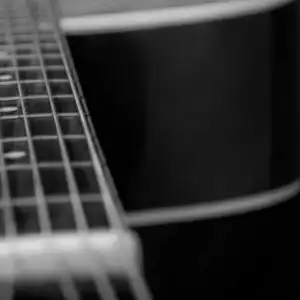
Which Guitar Strings Wear Your Fret Wire Down More?
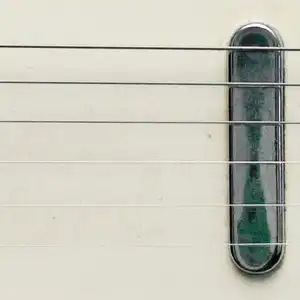
What is Nashville Tuning? Its History, Best Guitar Strings & Uses
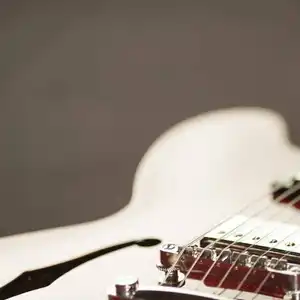
Guitar Scale Length Explained: String Tension & Playability
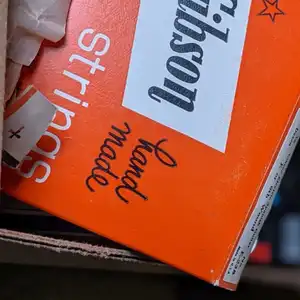
What Guitar Strings I Used To Play...
0 Responses
Leave a Reply
Your email address will not be published. Required fields are marked *

